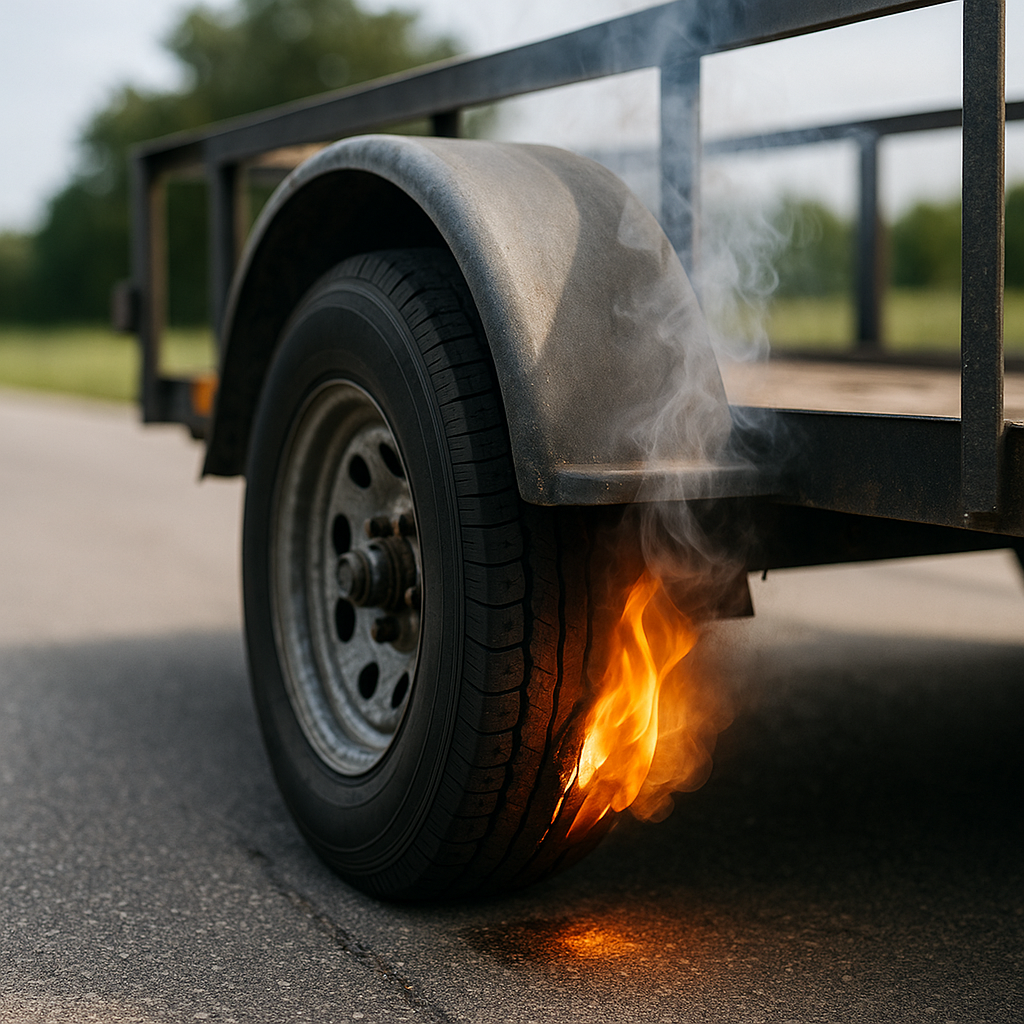In the realm of logistics and transportation, the safety and efficiency of semi trailers are paramount. One of the critical components that contributes to this is the tire pressure monitoring system for semi trailers. These systems are designed to continuously monitor the air pressure in each tire, providing real-time data that can help prevent potential blowouts and tire-related accidents.
The functioning of these monitoring systems is straightforward yet effective. They utilize sensors placed within the tires to measure the air pressure and temperature. This data is then transmitted to a central display unit, allowing drivers and fleet managers to keep track of the tire conditions while on the road. By ensuring that tire pressure is maintained at optimal levels, these systems can significantly enhance fuel efficiency, improve handling, and extend tire lifespan.
Moreover, the integration of a tire pressure monitoring system can lead to a reduction in maintenance costs. Early detection of under-inflated tires can prompt timely corrective actions, thereby preventing more severe issues from arising. This proactive approach not only safeguards the trailer but also contributes to the overall safety of the transportation process.
For those who prioritize safety and efficiency in their operations, investing in a tire pressure monitoring system is a wise decision. Tow with peace of mind, knowing that trailerwatchdog is standing guard. Visit trailerwatchdog.com to learn more about how we can transform your trailer into a smart trailer.
Importance of Maintaining Proper Tire Pressure

Maintaining proper tire pressure is not just a matter of convenience; it is a vital aspect of ensuring safety and efficiency for semi trailers. Under-inflated tires can lead to a host of problems, including increased wear and tear, higher fuel consumption, and diminished handling performance. Conversely, over-inflated tires can result in a harsher ride and reduce the contact area with the road, leading to compromised traction.
Research shows that approximately 30% of road accidents are attributed to tire-related issues, making it clear that tire pressure is a critical factor in road safety. When tires are at the correct pressure, they maintain optimal contact with the road surface, which enhances stability and steering control. This is especially important when navigating turns, braking, or driving on varying road conditions.
In addition to safety, proper tire pressure can yield significant financial benefits. Tires that are inflated to the correct specifications not only last longer but also enhance fuel efficiency. It is estimated that maintaining proper tire pressure can improve fuel economy by up to 3%. This can translate to substantial savings over time, especially for fleets operating numerous semi trailers.
Furthermore, regular monitoring of tire pressure can help detect potential issues early, allowing for timely maintenance and reducing the risk of unexpected breakdowns on the road. Ultimately, maintaining proper tire pressure is essential for the longevity of tires, the safety of drivers and cargo, and the overall efficiency of semi trailers.
How Tire Pressure Monitoring Systems Work
Tire Pressure Monitoring Systems (TPMS) are advanced technologies designed to enhance the safety and efficiency of semi trailers by providing real-time data on tire pressure and temperature. These systems work by utilizing a combination of sensors, transmitters, and a central display unit to monitor tire conditions continuously.
Each tire is equipped with a sensor that measures both the tire's air pressure and temperature. These sensors are typically mounted on the valve stem and can either be direct or indirect. Direct TPMS directly measures the pressure in each tire and transmits this data wirelessly to the central unit. In contrast, indirect TPMS estimates tire pressure based on the rotational speed of the tires, which can indicate under-inflation through changes in speed relative to the other tires.
The data collected by the sensors is sent to a centralized display unit, usually located in the vehicle's cab. This unit provides real-time readings of tire pressure and temperature, allowing drivers to be immediately aware of any irregularities. If a tire's pressure falls below a predefined threshold, the system triggers a visual or auditory alert, prompting the driver to take action before a potentially dangerous situation arises.
Moreover, modern TPMS can often be integrated with other trailer monitoring systems, providing a comprehensive view of the trailer’s health. This integration allows for proactive maintenance and enhances the overall management of trailer operations, making it easier to ensure that all aspects of the trailer are functioning optimally.
Benefits of Using TPMS in Semi Trailers

The implementation of a Tire Pressure Monitoring System (TPMS) in semi trailers offers a multitude of benefits that significantly enhance safety, efficiency, and maintenance management. Understanding these advantages can help fleet owners make informed decisions regarding their trailer operations.
- Enhanced Safety: One of the primary benefits of using TPMS is the significant increase in safety. Proper tire pressure is crucial for optimal traction and handling. By continuously monitoring tire conditions, TPMS helps prevent blowouts and loss of control, ultimately protecting both the driver and cargo.
- Improved Fuel Efficiency: Maintaining the correct tire pressure can lead to improved fuel efficiency. Under-inflated tires create more rolling resistance, causing the engine to work harder and consume more fuel. With TPMS, fleet operators can ensure tires are always at the optimal pressure, leading to reduced fuel costs.
- Reduced Maintenance Costs: TPMS aids in proactive maintenance management. By identifying tire issues early, fleet managers can address problems before they escalate into costly repairs or replacements. This not only extends the lifespan of the tires but also reduces overall maintenance expenses.
- Increased Uptime: With real-time monitoring and alerts, TPMS allows for timely interventions, minimizing downtime due to tire failure. This is particularly critical for semi trailers that rely on tight schedules and efficient logistics.
- Data-Driven Insights: Many TPMS solutions offer data analytics, providing fleet managers with insights into tire performance over time. This valuable data can inform better decision-making regarding tire replacements, rotations, and overall fleet management strategies.
Incorporating a TPMS into semi trailers is an investment that pays off through enhanced safety, efficiency, and cost savings. By ensuring optimal tire conditions, fleet owners can focus on the road ahead with greater confidence.
Preventing Tire-Related Accidents and Failures

Tire-related accidents and failures are among the leading causes of incidents on the road, particularly for semi trailers that carry heavy loads across long distances. Implementing a Tire Pressure Monitoring System (TPMS) is a proactive measure that significantly reduces the likelihood of such events, enhancing overall safety on the highways.
One of the most critical aspects of tire safety is maintaining the correct tire pressure. Under-inflated tires can lead to excessive heat buildup, increasing the risk of blowouts. Conversely, over-inflated tires can lead to reduced traction and increased wear. A TPMS continuously monitors tire pressures, alerting operators to any fluctuations that could indicate potential problems.
Additionally, TPMS plays a vital role in monitoring tire temperature. Elevated temperatures can signal issues such as under-inflation, misalignment, or even suspension problems. By providing real-time data, TPMS allows fleet managers to address these issues before they escalate into catastrophic failures.
Moreover, the integration of TPMS contributes to the overall maintenance strategy of a fleet. Regular monitoring helps ensure that tires are rotated and replaced as needed, preventing uneven wear that can compromise safety. This data-driven approach not only helps to maintain tire integrity but also fosters a culture of accountability among drivers and fleet operators.
In summary, investing in a TPMS is critical for preventing tire-related accidents and failures. By ensuring that tires are consistently monitored for pressure and temperature, fleet owners can significantly enhance road safety, protect their assets, and reduce liability risks.
Future Trends in Tire Pressure Monitoring Technology

The landscape of tire pressure monitoring technology is evolving rapidly, driven by advancements in sensor technologies, data analytics, and connectivity solutions. As the demand for enhanced safety and efficiency in the transportation sector grows, so does the need for more sophisticated Tire Pressure Monitoring Systems (TPMS).
One notable trend is the integration of IoT (Internet of Things) capabilities into TPMS. By leveraging IoT, tire monitoring systems can transmit real-time data to fleet managers and drivers via mobile applications or web platforms. This connectivity not only allows for immediate alerts regarding tire pressure and temperature but also enables predictive maintenance, where data analytics can forecast potential tire issues before they become serious problems.
Another exciting development is the use of machine learning algorithms to analyze tire performance data. These algorithms can identify patterns, helping fleet operators make informed decisions about tire management and maintenance schedules. This predictive capability significantly reduces downtime and enhances the operational efficiency of semi trailers.
Moreover, advancements in sensor technology are leading to more compact, cost-effective, and durable monitoring devices. Future TPMS units may incorporate advanced materials and designs that withstand harsh conditions, providing reliable performance throughout the life of the tire.
As we look ahead, it is clear that the future of tire pressure monitoring technology will prioritize not just safety, but also efficiency and sustainability. Fleet operators will benefit from these innovations, ultimately leading to reduced operational costs and improved safety on the roads.
Tow with peace of mind, knowing that trailerwatchdog is standing guard.








